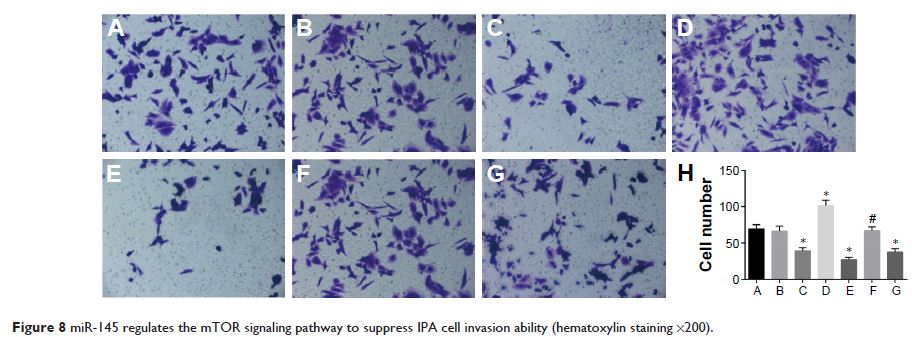9 7 2 2 7
论文已发表
注册即可获取德孚的最新动态
IF 收录期刊
- 3.3 Breast Cancer (Dove Med Press)
- 3.4 Clin Epidemiol
- 2.5 Cancer Manag Res
- 2.9 Infect Drug Resist
- 3.5 Clin Interv Aging
- 4.7 Drug Des Dev Ther
- 2.7 Int J Chronic Obstr
- 6.6 Int J Nanomed
- 2.5 Int J Women's Health
- 2.5 Neuropsych Dis Treat
- 2.7 OncoTargets Ther
- 2.0 Patient Prefer Adher
- 2.3 Ther Clin Risk Manag
- 2.5 J Pain Res
- 2.8 Diabet Metab Synd Ob
- 2.8 Psychol Res Behav Ma
- 3.0 Nat Sci Sleep
- 1.8 Pharmgenomics Pers Med
- 2.7 Risk Manag Healthc Policy
- 4.2 J Inflamm Res
- 2.1 Int J Gen Med
- 4.2 J Hepatocell Carcinoma
- 3.7 J Asthma Allergy
- 1.9 Clin Cosmet Investig Dermatol
- 2.7 J Multidiscip Healthc

微小 RNA-145 抑制 mTOR 信号通路的活化,通过在体内和体外靶向 AKT3 来抑制侵袭性垂体腺瘤细胞的增殖和侵袭
Authors Zhou K, Fan Y, Wu P, Duysenbi S, Feng Z, Du G, Zhang T
Received 28 July 2016
Accepted for publication 7 December 2016
Published 16 March 2017 Volume 2017:10 Pages 1625—1635
DOI https://doi.org/10.2147/OTT.S118391
Checked for plagiarism Yes
Review by Single-blind
Peer reviewers approved by Dr Akshita Wason
Peer reviewer comments 3
Editor who approved publication: Dr Tohru Yamada
Purpose: This study was designed to explore how miR-145 regulates the mTOR
signaling pathway in invasive pituitary adenoma (IPA) by targeting AKT3.
Methods: A total of 71 cases of IPA tissues and 66 cases of non-IPA tissues were
obtained in this study. In vitro, the IPA cells were assigned into blank
control, empty plasmid, miR-145 mimic, miR-145 inhibitor, miR-145 mimic +
rapamycin, miR-145 inhibitor + rapamycin and rapamycin groups. Quantitative
real-time polymerase chain reaction (qRT-PCR) and Western blotting were
performed to detect the protein expressions of PI3K, AKT3, mTOR mRNA and the
mRNA expression of miR-145 both in vivo and in vitro. Additionally, the S6K and
RPS6 mRNA and protein expressions as well as the relative phosphorylation
levels were determined in vitro. MTT assay, flow cytometry and transwell assay
were used to testify the cell proliferation, apoptosis and invasion ability,
respectively.
Results: The IPA tissues exhibited significantly lower expression of miR-145 but
higher PI3K, AKT3 and mTOR mRNA and protein expressions when compared with the
non-IPA tissues. Compared with the blank control and empty plasmid groups, the
miR-145 mimic group showed significantly decreased PI3K, AKT3, mTOR, S6K and
RPS6 mRNA and protein expressions as well as phosphorylation levels; besides,
the IPA cell proliferation, migration and invasion ability were strongly
inhibited, accompanied with the increased number of apoptotic cells. In the
miR-145 inhibitor group, the PI3K, AKT3, mTOR, S6K and RPS6 mRNA and protein
expressions as well as the phosphorylation levels were significantly increased;
cell proliferation, migration and invasion ability were remarkably elevated,
accompanied with reduced apoptotic cell number.
Conclusion: The study demonstrates that miR-145 inhibits the mTOR signaling pathway
to suppress the IPA cell proliferation and invasion and promotes its apoptosis
by targeting AKT3.
Keywords: invasive pituitary adenoma, microRNA-145, mTOR signaling pathway,
proliferation, invasion, AKT3
